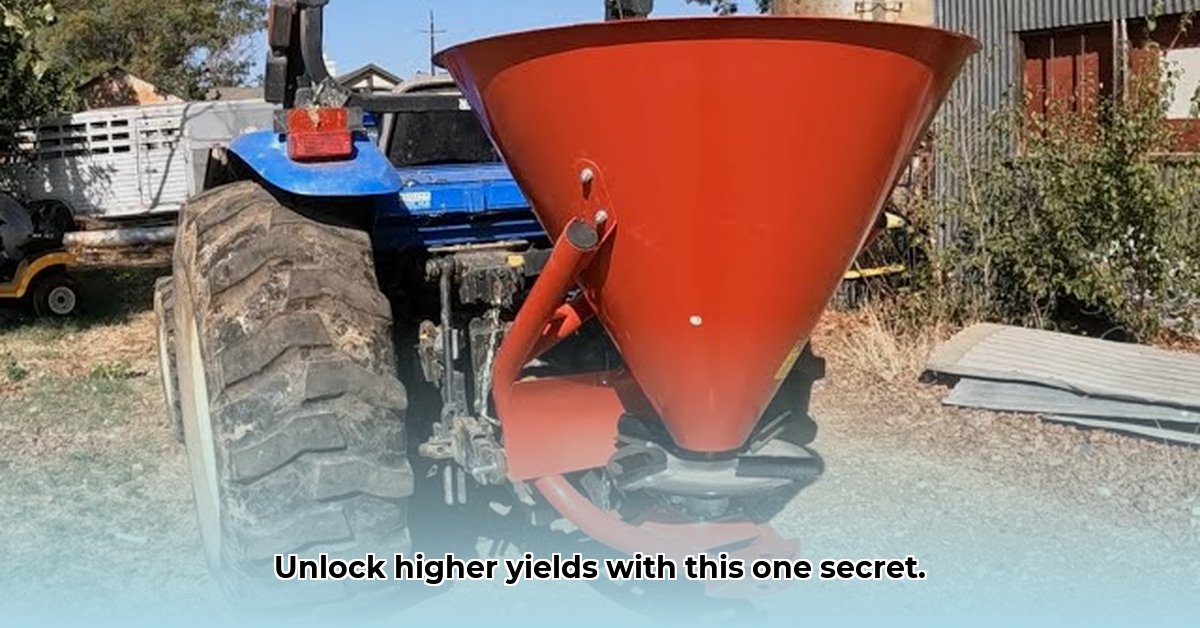
3-Point Hitch Tractor Supply: Unlocking Your Farm's Potential
The 3-point hitch system on your tractor is a cornerstone of efficient and sustainable farming. This versatile system powers a wide array of implements, dramatically improving yields and simplifying operations. But with numerous options available, selecting the right attachments for your specific farm can be challenging. This guide will help you navigate the choices and build a setup that maximizes productivity while prioritizing sustainability. Aren't higher yields and reduced environmental impact the ultimate goals? For more heavy-duty options, check out our tractor backhoe options at tractor backhoes.
Assessing Your Farm's Needs: The Foundation for Success
Before exploring equipment catalogs, thoroughly analyze your farm's specific challenges. Are you battling soil erosion, facing high labor costs, or struggling with fuel expenses? Identifying these key issues is the first step in selecting the appropriate 3-point hitch implements. For example, persistent erosion might necessitate implements that minimize soil disturbance, such as no-till drills. High labor costs could be addressed with attachments that automate tasks, like bale wrappers or automated fertilizer spreaders. Facing high fuel prices? Prioritize fuel-efficient implements and farming practices.
This self-assessment involves more than just identifying problems; it requires understanding your farm's unique characteristics. Consider your operation's size, the crops you cultivate, and your soil's texture. These factors will influence the effectiveness of different implements. A heavy-duty cultivator might be ideal for large-scale operations with heavy clay soils, but it may be overkill for smaller farms with sandy loam.
Choosing the Right 3-Point Hitch Attachments: Matching Tools to Tasks
With a clear understanding of your farm's needs, let's explore the world of 3-point hitch implements. Remember, the goal is to find tools perfectly suited to your farming style and challenges. Don't just buy the shiniest gadget; invest in tools that genuinely enhance your operation's efficiency and sustainability.
Here are some common categories and associated attachments:
Tillage: Sustainable farming emphasizes minimal soil disturbance. No-till drills allow planting directly into undisturbed soil, improving water retention and minimizing erosion. Cultivators loosen soil without turning it over, balancing soil health and weed control. The best cultivator will depend on your soil type and weeds. Heavy clay soils will likely need a different cultivator than lighter, sandier soils.
Planting and Seeding: Precision planting is crucial. Options range from simple broadcast spreaders for smaller seeds to sophisticated GPS-guided planters for larger seeds or crops requiring precise spacing. GPS guidance ensures accurate placement, preventing overlaps and gaps which can reduce yields. Advanced systems often incorporate variable rate seeding, adjusting seed density based on soil conditions or previous yields. Did you know that precise planting can increase yields by as much as 15%?
Fertilizer Application: Efficient fertilizer application is crucial for yield optimization and environmental protection. Spreaders broadcast dry granular fertilizer, while injectors deliver fertilizer directly into the soil, minimizing nutrient loss. The optimal choice depends on your fertilizer type and soil characteristics. "A combined approach often yields the best results," says Dr. Emily Carter, Soil Scientist at the University of California, Davis.
Harvesting and Post-Harvest: 3-point hitch attachments assist with baling, mowing, and residue management. Baling efficiently gathers and compresses hay or forage, reducing storage space. Mowers are essential for cutting hay or pasture. Choosing between these depends on your farm's specific needs. Larger farms might benefit from heavy-duty balers, while smaller operations prefer more maneuverable alternatives.
Maximizing Efficiency & Sustainability: Getting the Most From Your Investments
Having the right tools is crucial, but using them wisely is equally important. Here are some strategies to maximize efficiency and minimize environmental impact:
Regular Maintenance: Regular cleaning, lubrication, and timely repairs significantly extend implement lifespan and minimize downtime. Preventative maintenance saves time and money on costly repairs.
Safety First: Always prioritize safety. Familiarize yourself with your equipment and strictly follow the manufacturer’s safety guidelines. Regular safety checks are essential to prevent accidents and protect your well-being.
Efficient Operations: Plan your work carefully. Combining tasks, like tilling and planting in a single pass, reduces fuel consumption and boosts productivity. Minimize wasted movement and maximize resource utilization.
Exploring Precision Agriculture: GPS-guided implements offer incredible accuracy, reducing waste and increasing yields. While the initial investment may seem high, the long-term benefits in terms of reduced input costs and improved yields often justify the expense. Continuous research is improving these systems; stay updated on the latest advancements.
Sustainable Farming and Your 3-Point Hitch: A Winning Combination
Sustainable agriculture isn't a trend but a necessity. Your choice of 3-point hitch implements directly impacts your environmental footprint. By choosing tools that promote efficiency and reduce waste, you contribute to a healthier planet. Consider:
- Reduced Tillage: Minimizes soil disturbance, protecting soil structure and reducing erosion.
- Precise Input Application: Targeted application of fertilizers and pesticides minimizes waste and prevents environmental pollution.
- Fuel Efficiency: Fuel-efficient implements save money and reduce your farm's carbon footprint.
Investing in Your Farm's Future: The Long-Term View
Investing in high-quality 3-point hitch equipment is an investment in your farm's long-term success. Durable implements reduce the need for frequent replacements, while efficient tools boost productivity and profitability. It's not just about immediate costs, but about sustained return on investment, ensuring your farm's prosperity for years to come. Remember that choosing the right equipment for your farm is a vital decision requiring careful consideration of your needs. Numerous resources and experts are available to guide you through the process.